- Region
- Águilas
- Alhama de Murcia
- Jumilla
- Lorca
- Los Alcázares
- Mazarrón
- San Javier
-
ALL AREAS & TOWNS
- AREAS
- SOUTH WEST
- MAR MENOR
- MURCIA CITY & CENTRAL
- NORTH & NORTH WEST
- TOWNS
- Abanilla
- Abarán
- Aguilas
- Alamillo
- Alcantarilla
- Aledo
- Alhama de Murcia
- Archena
- Balsicas
- Blanca
- Bolnuevo
- Bullas
- Cañadas del Romero
- Cabo de Palos
- Calasparra
- Camping Bolnuevo
- Campo De Ricote
- Camposol
- Canada De La Lena
- Caravaca de la Cruz
- Cartagena
- Cehegin
- Ceuti
- Cieza
- Condado de Alhama
- Corvera
- Costa Cálida
- Cuevas De Almanzora
- Cuevas de Reyllo
- El Carmoli
- El Mojon
- El Molino (Puerto Lumbreras)
- El Pareton / Cantareros
- El Raso
- El Valle Golf Resort
- Fortuna
- Fuente Alamo
- Hacienda del Alamo Golf Resort
- Hacienda Riquelme Golf Resort
- Isla Plana
- Islas Menores & Mar de Cristal
- Jumilla
- La Azohia
- La Charca
- La Manga Club
- La Manga del Mar Menor
- La Pinilla
- La Puebla
- La Torre
- La Torre Golf Resort
- La Unión
- Las Palas
- Las Ramblas
- Las Ramblas Golf
- Las Torres de Cotillas
- Leiva
- Librilla
- Lo Pagan
- Lo Santiago
- Lorca
- Lorquí
- Los Alcázares
- Los Balcones
- Los Belones
- Los Canovas
- Los Nietos
- Los Perez (Tallante)
- Los Urrutias
- Los Ventorrillos
- Mar De Cristal
- Mar Menor
- Mar Menor Golf Resort
- Mazarrón
- Mazarrón Country Club
- Molina de Segura
- Moratalla
- Mula
- Murcia City
- Murcia Property
- Pareton
- Peraleja Golf Resort
- Perin
- Pilar de la Horadada
- Pinar de Campoverde
- Pinoso
- Playa Honda
- Playa Honda / Playa Paraíso
- Pliego
- Portmán
- Pozo Estrecho
- Puerto de Mazarrón
- Puerto Lumbreras
- Puntas De Calnegre
- Region of Murcia
- Ricote
- Roda Golf Resort
- Roldan
- Roldan and Lo Ferro
- San Javier
- San Pedro del Pinatar
- Santiago de la Ribera
- Sierra Espuña
- Sucina
- Tallante
- Terrazas de la Torre Golf Resort
- Torre Pacheco
- Totana
- What's On Weekly Bulletin
- Yecla


- EDITIONS:
 Spanish News Today
Spanish News Today
 Alicante Today
Alicante Today
 Andalucia Today
Andalucia Today
article_detail
Spanish News Today Editors Roundup Weekly Bulletin Jan 10

TOP STORIES: "Spain predictions 2025—What to expect for this year" & "Northern Irishman missing in Spain turns up dead, suspected murdered"
Happy New Year, everybody! It’s good to be back, although I can’t pretend it wasn’t also good to have a couple of weeks off. Hope you had a nice Christmas/New Year/Three Kings break (blimey, Christmas in Spain really does go on forever, doesn’t it?).
Thanks for waiting patiently while we took a couple of weeks off from sending this bulletin out. This week’s bulletin, the first one of the year, is a bit of a mix of things that happened over the holiday period, of things that took place just this last week, and of things that are expected to happen over the course of this new year just begun.
So grab yourself a little glass of something (ah, no, Dry January, I forgot. Make mine an orange juice then) and settle into a nice cosy armchair by the roaring fireplace for the best read of the year so far…
Happy 47th anniversary
So, here we are in 2025, and Spain’s kicking off a whole campaign to mark ‘50 years of Democracy,’ complete with exhibitions at the Reina Sofía museum in Madrid and plenty of other official acts, activities and actions. Sounds great, right?
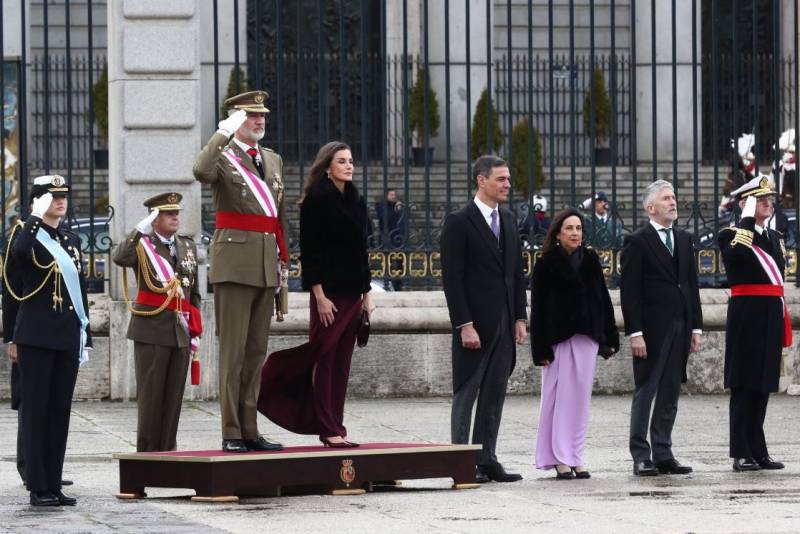
Except it’s not really true; what we’re actually marking is 50 years since General Francisco Franco, Spain’s infamous dictator, died peacefully in his bed. 2025 is not the anniversary of democracy itself, which didn’t kick off until 1978.
Critics from all sides are calling out the left-wing government for using Franco’s death as a political PR stunt, arguing that the emphasis on the dictator’s legacy does more to stir up old divisions than unite anyone. But why let a little thing like factual accuracy and social unity get in the way of a good political opportunity?
We should wait until 2028 to properly celebrate democracy’s golden anniversary, but with elections looming and the Socialists keen to grab the limelight while they still can, patience isn’t likely to be on the agenda.
Politicians starting the year as they mean to go on, then.
What will happen in 2025 (according to some guy 500 years ago)
Nostradamus, that infallible 16th-century French apothecary-turned-prophet, has terrified generations with his eerily-accurate predictions about what’s in store for the future. A group of die-hard fans have been busy decoding his messages to find out what’s in store for 2025 and the visions certainly don’t disappoint. The prophet is best known for his doomsday predictions so we shouldn’t be surprised to learn that his alleged forecasts for 2025 are equal parts fascinating and apocalyptic.

First off, Nostradamus supposedly foresaw a worldwide war in 2025. With tensions flaring between major players like the US, China and Russia, his followers suggest that sparks from Ukraine or Taiwan could escalate into something bigger.
A financial collapse might also be on the horizon, with Europe taking the brunt. Spain, Italy and Greece are rumoured to face significant economic woes, while across the pond, hyperinflation could grip Argentina, and even the mighty US dollar might wobble.
Nostradamus’ 2025 vision wouldn’t be complete without a nod to the extreme weather we’ve been experiencing of late. From blistering heatwaves to powerful storms, his cryptic lines hint at a year packed with nature’s fury.
Weird weather
Of course, many people consider this to be complete nonsense, but there may be a grain of truth in some of his visions. Climate change is already reshaping our weather patterns and it’s just been confirmed that 2024 was the third hottest year of all time in Spain.
In a social media post shared at the end of December, Aemet revealed that the year closed with an average temperature of 15°C, placing it behind only 2022 (15.4°C) and 2023 (15.2°C) as the hottest years on record.
Spain isn’t alone in this alarming trend either. The latest climate bulletin from the Copernicus Climate Change Service (C3S) has revealed that the global average temperature for the 12-month period from October 2023 to September 2024 is the second highest on record, with a staggering 0.74°C increase above the 1991-2020 average.
What goes up, just goes up and up
His prediction about Spain facing financial challenges isn’t too far off the mark either, since the average household is already feeling the pinch of rising prices. From electricity bills to housing costs, food and taxes, many items on our expense lists are heading upward.

The biggest hit consumers can expect is without doubt electricity bills. After years of reduced VAT, rates are returning to 21%, meaning households could pay an extra 100 euros annually, according to OCU estimates. The OCU is pushing for electricity to be permanently classified as a basic necessity, which would cap VAT at 10% regardless of market conditions, but for the time being, expect to see a huge hike in January.
As if the market wasn’t under enough strain already, both buying and renting are set to become pricier. Analysts predict rising property prices, driven by anticipated ECB rate cuts, while a lack of rental housing in major cities will push rents even higher.
Food costs are a mixed bag: VAT on essentials like olive oil returns to 4%, while pasta and seed oils jump to 10%. However, falling prices on many items, including olive oil, may offset the impact.
Households in larger towns will face a new waste tax, costing 165-200 euros annually. Social Security contributions for the self-employed will rise slightly, and high earners face increased taxes on capital gains and salaries.
A potential diesel tax hike could add 11 cents per litre, while vapes and tobacco will also see new taxes by April.
But there is some good news. Small businesses will see a corporate tax cut from 25% to 20%. Meanwhile, pensions will increase by up to 9% and the minimum wage is set to rise by at least 3%.
Public transport discounts will also continue, freezing prices for many commuters.
It’s a year of challenges, but a few financial breaks might help balance the scales.
April, come she will
“April, come she will,” sang Art Garfunkel, and this April will come with the scrapping of the Golden Visa scheme. We’ve already written a lot about this in the past but finally, a whole year after Pedro Sánchez announced he was going to, he will do away with that little backdoor into residency for wealthy foreigners. More than just empty promises, the month for its departure has been officially laid out in the Official State Gazette.
Since 2013, the so-called Golden Visa has been allowing people to call Spain home if they would just buy a property worth over 500,000 euros, throw 2 million euros into public debt, or invest 1 million euros in Spanish stocks. There was even a clause for business projects deemed “of general interest,” which, let’s be honest, could mean anything with the right paperwork.
It remains to be seen whether scrapping the scheme will actually relieve the pressure on the housing market, as has been stated. That’s likely not the real reason for scrapping it, though. More, it has been deemed unnecessary as a form of income for the government, not like it was during the financial crisis of a decade ago.
Not that the golden visa was exactly thriving recently. In 2022, only 451 were handed out, a 50% drop from the year before. That’s not exactly a ringing endorsement. Though, interestingly, after the government announced plans to kill it, there was a bit of a last-minute gold rush – 573 visas were issued since April 2024. Go figure.
Spain’s not the first to ditch this kind of programme either. Portugal and Canada have already shut the door on similar schemes. Seems the golden visa era is losing its shine all over.
For anyone who’s already got their golden ticket, though, don’t panic. Existing visas and renewals will still be honoured, and your family’s covered too. And it’s still possible to get one for the next three months if you’re in a rush.
Northern Irishman murdered on the Costa Blanca

Around the middle of December, 37-year-old Northern Irishman John George Hardy went missing in Spain after he arrived to see friends in Cabo Roig but never made a subsequent appointment in Benidorm.
The investigation began when George’s father reported him missing to the authorities in Northern Ireland on December 21. George had been expected to return home but never made the flight to Belfast.
This week, on Tuesday January 7, police in Rojales discovered the partially decomposed body of the man affectionately known as ‘Georgie’ and authorities now suspect foul play, with the Guardia Civil linking the arrest to an alleged murder. The tragic discovery has led to the arrest of a 32-year-old man, and local reports suggest that another potential suspect, also from Northern Ireland, may have fled to Thailand, prompting further investigation.
Acting on the missing person’s report, the Guardia Civil’s judicial police team in Pilar de la Horadada launched a search operation, locating his body on Tuesday afternoon in a remote area about a mile off the main road between Rojales and Torrevieja.
The remains, in an advanced state of decomposition, have since been transferred to the Institute of Forensic Medicine for a full autopsy to determine the cause of death.
George’s disappearance spurred a determined effort by his family, with up to 50 relatives and friends, including his parents and sisters, travelling to the Alicante area to aid the search. The group was joined on New Year’s Day by Northern Ireland’s K9 Search and Rescue team, a volunteer canine unit that worked tirelessly before returning home last weekend.
On a social media post, George’s sister Courtney said: “My body is numb and my heart is broken. You have taken my brother’s life and ruined mine – you have put us through hell.
“I hope who has done this on my family, John’s face haunts them every night.”
Darren George, his brother, told BBC Northern Ireland that his parents were “two broken people”.
“They will never get over this, none of us will get over it,” he added. “John’s at rest… we’re not, we’ll never be at rest.”
Murcia
To Murcia now, with a little roundup of this week and a couple of news bits from the last three weeks.
Let’s start with Murcia’s housing market, which in 2024 saw the second-highest increase in housing prices across Spain, hitting an average of 1,506 euros per square metre. While Cieza led the charge with an incredible 33.89% price hike, San Javier retained its title as the priciest spot, and Mazarrón, amazingly, managed to buck the trend with a slight decline in house prices. Jumilla, meanwhile, holds onto its position as the cheapest town in the Region, with an average house price of 781 euros per square metre.
Experts are putting the overall price hike for the Region down to a cocktail of high demand, low supply and tempting mortgage deals. With predictions of more price hikes on the horizon, it seems like now is a good time to get in on the middle floor of the Murcia property ladder (if you’ll excuse a mixed metaphor), or to sell up soon if you’re so inclined!
One interesting story that came out over the Christmas period – Murcia’s renewable energy production has ramped up massively and now makes up an astonishing 43% of its energy mix. This figure still lags behind the Spanish average by 13%, but it’s still laudable that Murcia’s sunny disposition is doing wonders for solar power, which leapt from 26% to 36% of the mix last year.
Wind and hydro power are doing their bit too, and Murcia’s photovoltaic boom added 115 megawatts of self-consumption capacity in 2024, meaning the Region avoided spewing 2.2 million tonnes of CO2 into the atmosphere. That’s equivalent to taking nearly half a million petrol cars off the road or the carbon absorption of 100 million trees.
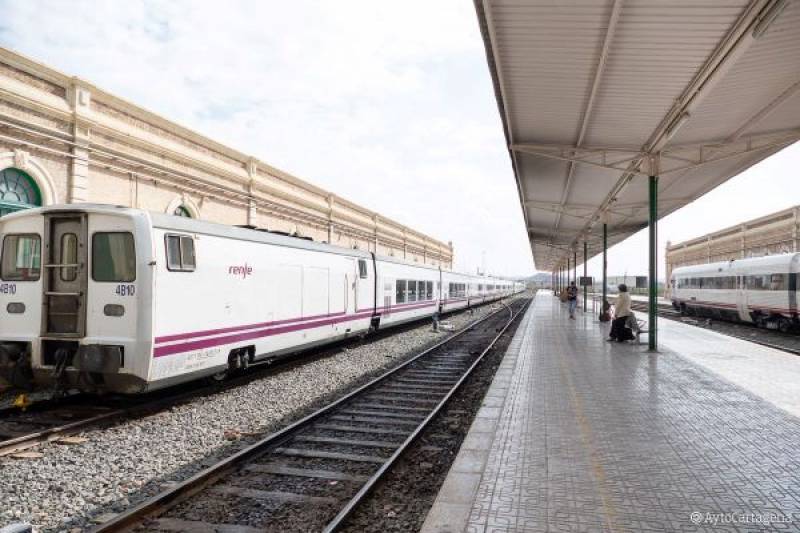 To transport now, and the Spanish Ministry of Transport’s proposal to extend the Feve railway from Cartagena to more towns along the Mar Menor has stirred up excitement. However, as always, there’s a catch. The regional government would have to take over management of the existing line and draft a protocol to explore the extension’s feasibility.
To transport now, and the Spanish Ministry of Transport’s proposal to extend the Feve railway from Cartagena to more towns along the Mar Menor has stirred up excitement. However, as always, there’s a catch. The regional government would have to take over management of the existing line and draft a protocol to explore the extension’s feasibility.Given the glacial pace of transport projects (anyone remember the 2009 tram line plans that went nowhere?), it’s hard to muster too much enthusiasm just yet. Still, the idea of a train linking Cartagena to Cabo de Palos and San Pedro del Pinatar is undeniably appealing, especially for those weary of coastal traffic jams.
Speaking of transport woes, French rail operator Ouigo has dealt a blow to high-speed travel between Murcia and Madrid by slashing its services for this winter. Blaming “operational reasons” (a vague excuse if ever there was one), the company will run just one train per day on Tuesdays, Wednesdays and Thursdays until late February.
Passengers whose travel plans have been upended can opt for refunds or reschedule their journeys, though some might wonder why they didn’t just book with Renfe or its budget offshoot, Avlo, which still offer regular services. Ouigo promises a return to full service by the end of February, but for now, the Region of Murcia will have to make do with fewer speedy escapes to the Spanish capital.
For the new year just begun, the Region’s beloved golf courses are preparing for their annual maintenance rituals. At La Torre, El Valle, and Hacienda Riquelme Golf Resorts, hollow coring will necessitate closures during May, June and August. Meanwhile, UGolf Murcia’s courses – Hacienda del Álamo, Mar Menor, and Saurines at Terrazas de la Torre – have their own greens spiking schedules lined up for the spring and summer. To make up for the inconvenience caused by the closures, UGolf are generously offering reduced rates during the two weeks following maintenance.
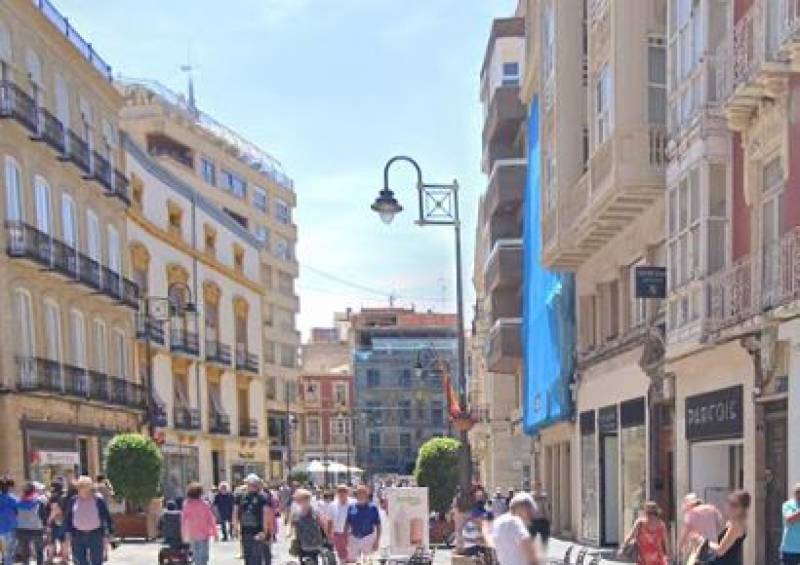 Just this week, on Wednesday, there was a bomb scare in central Cartagena when a couple of suspicious-looking packages were spotted lying on the floor of the high street and someone phoned the police. In dramatic scenes that drew curious crowds to the cordoned-off area, the bomb squad came and detonated in a controlled explosion the pair of odd-looking briefcases, which were subsequently discovered to be just your regular garden-variety luggage which had accidentally been left lying there. False alarm.
Just this week, on Wednesday, there was a bomb scare in central Cartagena when a couple of suspicious-looking packages were spotted lying on the floor of the high street and someone phoned the police. In dramatic scenes that drew curious crowds to the cordoned-off area, the bomb squad came and detonated in a controlled explosion the pair of odd-looking briefcases, which were subsequently discovered to be just your regular garden-variety luggage which had accidentally been left lying there. False alarm.As always, we finish our Murcia section with a brief look at some of the more exciting events coming up, including, on Saturday January 11, a fun-looking virtual reality experience for youngsters in Águilas; and a tour to discover the urban street art in Los Alcázares either by bike or on the dedicated tourist train. On Sunday 12, Santiago de la Ribera has its regular craft market while Santa Rosalía is hosting its popular annual classic car show. Plus, all weekend long, the closing events of the Holy Jubilee Year in Caravaca de la Cruz.
You can see our EVENTS DIARY for more events and activities coming up soon in the Region of Murcia:
Spain
Going back to property matters for a minute, the Spanish government is busy trying to regulate the short-term, holiday rental market to make the entire sector more transparent and weed out illegal tourist accommodation. In doing so, Spain has become the first EU country to implement a nationwide registry for short-term rentals.
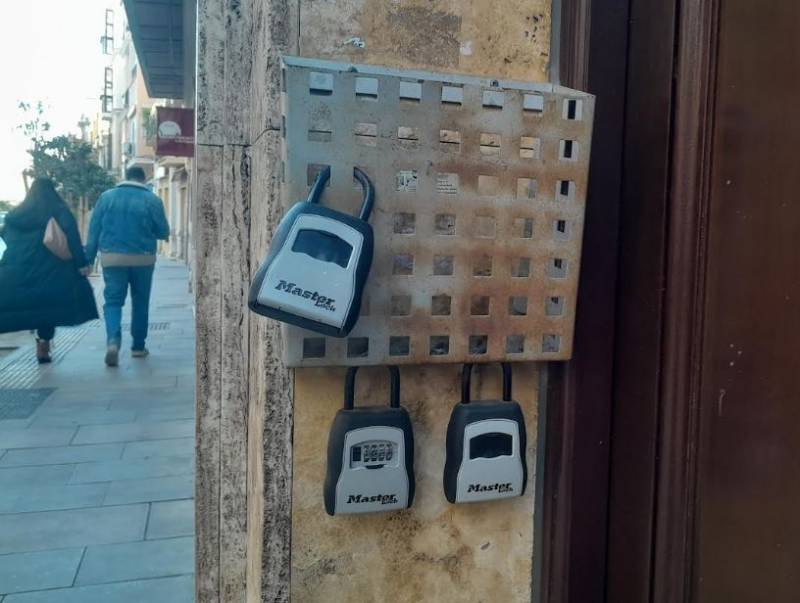
Basically, from January 2, landlords who advertise their holiday homes online are now expected to register their properties and obtain a unique identification number from the authorities. This number will have to be clearly visible on their online adverts. Property owners will be given until the beginning of July to fully comply.
Once it’s up and running fully in the summer, the registry will track various types of short-term accommodations, including tourist rentals, seasonal properties, room rentals and even temporary housing aboard boats and cruise ships.
Going forward, online rental platforms will be expected to ensure landlords display their registration numbers in listings, conduct periodic compliance checks and promptly remove non-compliant ads. Additionally, platforms are obligated to provide authorities with rental data monthly.
There is some terrific news for anyone who uses internet banking in Spain. From January 9, a new EU regulation came into effect that means all banks in Spain now have to offer instant money transfers at a cost equal to or lower than that of ordinary transfers.
This means that for most current account holders, immediate transfers will be free. What’s more, ‘instant’ will actually mean instant: according to the European Union directive, the transfer will have to be completed in 10 seconds or less.
The use of instant transfers is actually on the rise in Spain despite the prohibitive cost, but this is not the case in the rest of the EU. In 2023, 54% of banking operations in Spain were immediate, according to data from Iberpay, but in the rest of Europe where the charges are higher, the EC estimates that there are still 70 million accounts without access to this option.
Given that bin charges are going to be more expensive in 2025, the onus will be on households to up their recycling game. This is not only kinder to the environment; it will help us save money too. But this is often easier said than done and recycling can be confusing: the reality is that many people are unsure of which bin their household waste should go into. Moreover, lots of products are made from more than one material, so which is the correct container for these?
To simplify recycling, new regulations have been approved that require all packaging to include clear and precise recycling information for what should be done with it after the end of its useful life. One of the main changes is that packaging must indicate the appropriate bin for its disposal.
 If a package is made up of several separable materials, each material must have the corresponding container indicated. In cases where the materials are not separable, the packaging must indicate the container for the predominant material.
If a package is made up of several separable materials, each material must have the corresponding container indicated. In cases where the materials are not separable, the packaging must indicate the container for the predominant material.In addition, reusable packaging must include the Deposit, Return and Refund System (DRS) symbol, a measure aimed at encouraging reuse and reducing waste generation.
In another groundbreaking move, Spain has banned the use of terms such as ‘environmentally friendly’ or equivalent expressions on packaging labels will also come into force, in order to avoid confusion and encourage proper disposal practices by consumers.
When it comes to keeping things running on time, one Spanish airline has officially soared to the top of Europe’s rankings. Iberia has been named the most punctual airline in Europe for 2024, proving that “mañana, mañana” isn’t always the rule in Spain!
According to Cirium’s On-Time Performance Report, Iberia Express landed 84.69% of its flights on schedule – an impressive achievement considering the challenges aviation faced last year.
But the accolades don’t stop there. Iberia, its low-cost sibling, also shined brightly, taking second place with 81.58% of its flights arriving on time.
What’s even more remarkable is Iberia Express’s global success. Not only did it clinch first place in Europe for punctuality, but it was also named the most on-time low-cost airline in the world for 2024.
Iberia and Iberia Express have made punctuality their calling card. Iberia has been among Europe’s top performers for nine consecutive years, while Iberia Express consistently ranks as a global leader in the low-cost category.
In key markets like the Canary Islands and Balearic Islands, both airlines boast departure punctuality rates of over 90%.
Alicante
The Ministry of Transport has given the green light to the construction of six new high-speed railway lines at Alicante train station. The move will greatly enhance the city’s rail infrastructure, strengthening the Mediterranean Corridor that runs along Spain’s east coast.
The project, which comes with a 20.2-million-euro price tag, will boost Alicante’s role as a key hub for train connectivity across the Valencian Community and the southeast of Spain.
Currently, the station has four high-speed standard-gauge lines, but this expansion will add six more, along with a full overhaul of the railway infrastructure and passenger spaces.
But the upgrades don’t stop at the tracks. Alicante station’s passenger building will be remodelled, with improvements to check-in areas and better facilities for travellers. To top it off, sound barriers will be installed in the north and south parts of the station to reduce noise for nearby residents.
Once the work is done, the station will be equipped to handle more passengers and train traffic than ever before. The revamped layout will not only make better use of the space but also ensure the station can accommodate high-speed, medium-distance and commuter trains with ease.
There’s also good news for Orihuela Costa residents who soon won’t need to trek all the way to Torrevieja for private hospital care. Mayor Pepe Vegara has announced that a brand-new private medical facility is set to be built in Lomas de Cabo Roig.
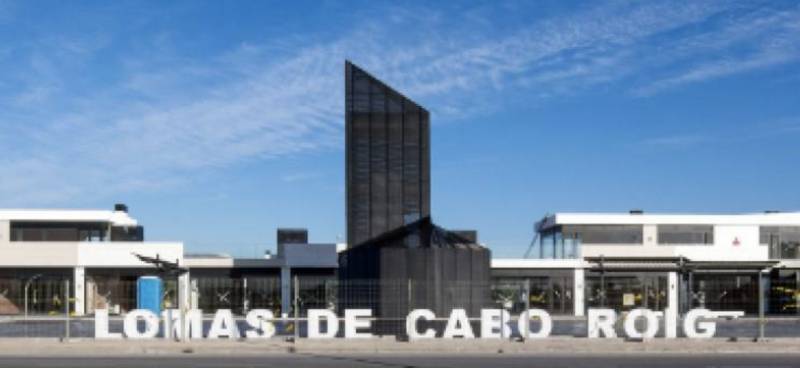 The new hospital will be perfectly located to serve the southern Orihuela Costa community. It’s just a short drive from hotspots like the bustling Cabo Roig strip, La Zenia and Campoamor. The chosen site, known as the EQ-1 plot, spans around 33,000 square metres and will comfortably accommodate the hospital, along with plenty of parking spaces.
The new hospital will be perfectly located to serve the southern Orihuela Costa community. It’s just a short drive from hotspots like the bustling Cabo Roig strip, La Zenia and Campoamor. The chosen site, known as the EQ-1 plot, spans around 33,000 square metres and will comfortably accommodate the hospital, along with plenty of parking spaces.Originally, this plot was earmarked for an ecopark back in 2022, but after concerns from locals about its proximity to residential areas, the project was relocated, paving the way for the new medical facility.
The hospital isn’t just about better healthcare; it’s also set to bring a significant economic boost. The project is expected to create 300 direct jobs and more than 1,000 indirect ones.
Plans also include essential infrastructure upgrades, such as a new drinking water tank and safer pedestrian crossings near the site.
On top of this, there’s talk of a second public health centre potentially being built in the area this year. Local authorities are committed to improving healthcare services, finally acknowledging that standards have been slipping in recent years.
This project promises a brighter future for Orihuela Costa, offering better healthcare access and new opportunities for the community.
Andalucía
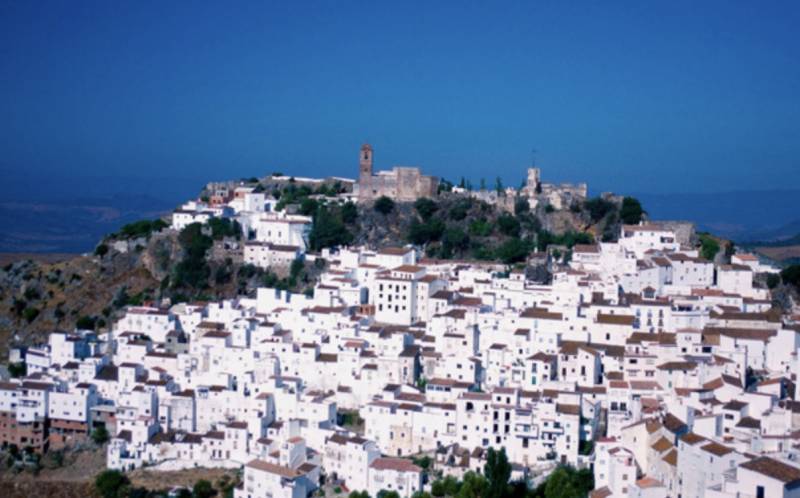 Over the last few weeks, we discovered which of the many, many towns in Andalucía is officially the most beautiful, apparently. According to an absolutely unbiased survey, the hands-down, categorically and objectively most beautiful town in the second-largest comunidad autónoma in all of Spain is Casares (Málaga).
Over the last few weeks, we discovered which of the many, many towns in Andalucía is officially the most beautiful, apparently. According to an absolutely unbiased survey, the hands-down, categorically and objectively most beautiful town in the second-largest comunidad autónoma in all of Spain is Casares (Málaga).This honour came via a survey conducted by Nordada, with voters presumably charmed by the town’s Moorish architecture and postcard-worthy vistas. Casares clinched the title with 4,922 votes, leaving Olvera in Cádiz trailing behind at 3,711.
Meanwhile, Vejer de la Frontera barely managed third place with a mere 875 votes, an embarrassing gap that might prompt its locals to reconsider their online campaigning strategies. Notably, Almería secured two spots in the top ten, with Mojácar and Abrucena proving that even desert towns can have their moment in the spotlight.
Córdoba, Jaén and Huelva each squeezed in a representative, but Écija – Seville’s lone contender and frequently one of the hottest places in Spain each July and August – might need to rethink its game plan. Maybe a “Most Middlingly Beautiful” competition would suit some of these underperformers better.
Speaking of people underperforming, let’s move on to Marbella, where a former MMA fighter turned Hell’s Angels enforcer learned the hard way that Instagram and organised crime don’t mix.
Saman Baghi, a 34-year-old German bodybuilder with a penchant for flaunting his opulent lifestyle online, was ambushed outside a posh padel club on January 2. Baghi’s assailant managed to shoot him in the leg, groin and even his anus before the gun jammed.
Baghi, proving that MMA training does occasionally pay off, hobbled to safety inside the club. Miraculously, he was treated and discharged the same day, though two bullets remain as unwelcome souvenirs. This isn’t Baghi’s first brush with death: he previously dodged an assassination attempt in Cologne in 2021. While Baghi may be hard to kill, his story is a grim reminder of Marbella’s darker side, where luxury meets the underworld with unsettling regularity.
And last of all, but perhaps not least, let’s pivot to Granada, where the Federico García Lorca Granada-Jaén Airport is planning to introduce a snazzy tech solution to ensure lousy weather no longer ruins travellers’ travel plans. This is the Performance-Based Navigation (PBN) system, a GPS-driven technology that promises to banish diversions and cancellations caused by the area’s temperamental winds and visibility issues.
Runway 27, infamous for its proximity to natural obstacles and a neighbouring air base, has long been the bane of pilots and passengers alike. The new system, scheduled to be introduced in 2026 (though originally promised for 2025, naturally), will allow planes to navigate with precision through adverse weather conditions.
Once implemented, PBN will offer Granada’s airport not just enhanced safety but also an eco-friendly sheen, as fewer overflights mean less pollution. But let’s not get ahead of ourselves; keep an eye out for when we tell you, this time next year, to expect this all to come to fruition in 2027. Ah, Spain. You’ve got to love it.
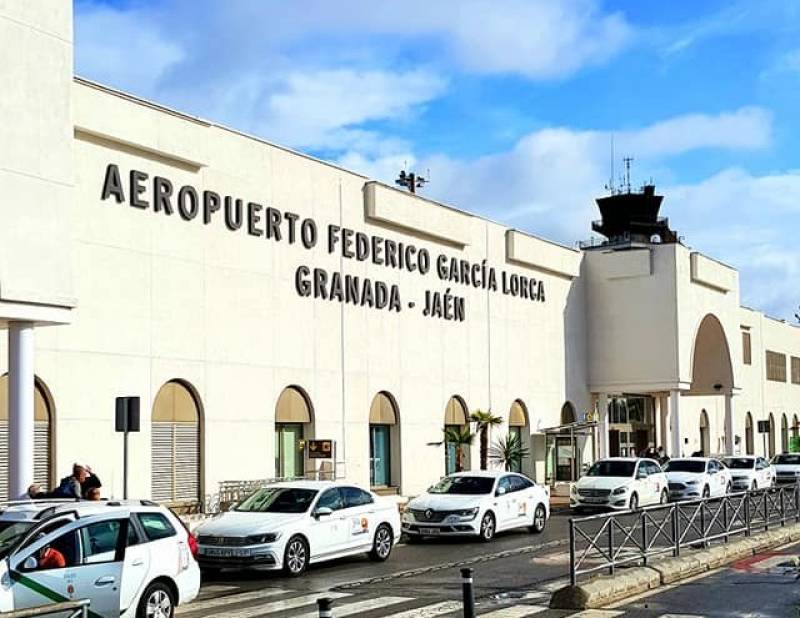
You may have missed…
- The place in Spain which reached 27ºC while the UK was snowed under this week.
While parts of the United Kingdom shivered under snow, ice and travel disruption this Monday, there was one place in Spain that reached over 27ºC – temperatures that would make a British summertime jealous! - Date is set for Alicante’s new Low Emission Zone.
Following countless delays and setbacks, Alicante’s Low Emission Zone (ZBE) will finally come into effect at the end of January, but in reality, the new rules will have virtually no impact on motorists. - Mar Menor ferry service cancelled until further notice.
As of this Wednesday, the passenger ferry service between Santiago de la Ribera and La Manga del Mar Menor has been cancelled until further notice due to low water levels. - Alicante Airport expands with 20-million-euro upgrade to handle growing passenger numbers.
As passenger numbers at Alicante Airport continue to grow month after month, a major step forward has been taken to expand the terminal and taxiways. This week, Spain’s airport management company Aena has put the project out to tender with the aim of meeting even higher demand in the future. - These are the 10 richest companies in Murcia.
See which ten companies in Murcia have a combined turnover of 9 billion euros a year!
And that’s all we have for you this first week back after Christmas. I hope some of the doom-and-gloom stuff contained here within didn’t get you down too much. Remember, there are always reasons to be cheerful, and that happiness is not so much a question of what happens to us, but how we choose to look at it, so let’s make this a truly Happy New Year!
See you again next week!
Contact Murcia Today: Editorial 000 000 000 /
Office 000 000 000




















